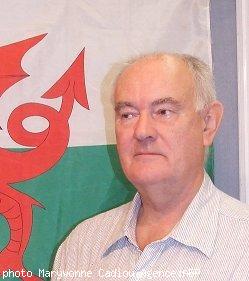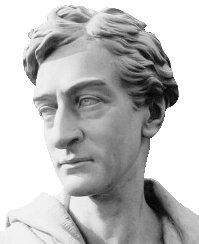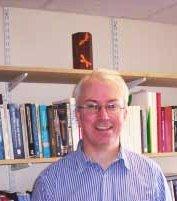




The Day School on the theme ''Our Celtics Cousins'' organized by the Cymdeithas Carnhuanawc or Carnhuanawc Society in Cardiff on Feb 16th, was about the development of Irish language in Northern Ireland Prison of Long Kesh in the 70s, about a journey in Brittany of the Welsh Rev Thomas Price, or Carnhuawac, about the situation of Cornish and of Gaelic in Scotland nowadays, by four eminent specialists of Celtic languages, their history, their literature.
I — How the Irish language grew in prison
One of the exciting developments among the Celtic languages during the past 30 years has been what has been happening in Belfast. The revival in the Irish language began, said Diarmait mac Giolla Chríost http://www.cf.ac.uk/cymraeg/english/academicStaff/dGiolla.shtml of the Department of Welsh, Cardiff University, in the early 1970s in Long Kesh prison in Northern Ireland. He was speaking at a Study Day on the theme Our Celtic Cousins organised by the « Carnhuanawc Society » http://uk.geocities.com/ajcouch/Carnhuanawc/ at the City Hall, Cardiff, on Saturday (February 16).
He explained how a large number of young republican nationalists were imprisoned by the British Government in Long Kesh prison. Treated as political prisoners, many found ways of learning the Irish language.
Many were total beginners, learners, but there was among them a few who could speak the language. They realised that something special belonged to it, and that learning the language was a way of keeping their spirits from being broken. They began by shouting words and phrases to each other from the cells. A kind of Irish patois, called Jailtacht, evolved. (Gaeltacht is the word used for the Irish speaking parts of the Irish Republic).
Then the British came to the conclusion in 1976 that the prisoners were having too comfortable a time in the prison and they lost their status of political prisoners. Many were now placed in solitary confinement. This made it more difficult for those trying to learn Irish. Nevertheless, they managed to devise methods of communicating by passing bits of paper and calling out lessons to each other from cell to cell. The Irish became a symbol of resistance.
When those prisoners were eventually released and returned to their communities they took their enthusiasm with them and started a language revolution, said Diarmait mac Giolla Chríost. « They returned to their communities with the message that the language was the way to continue the struggle » , he said.
By now there are a number of Irish Schools, particularly in East Belfast and the Irish language situation in Northern Ireland has changed dramatically.
II — Carnhuanawc and Brittany
In 1829 Carnhuanawc – The Reverend Thomas Price – went from Wales to Brittany. In 1819 he had tried to persuade the British and Foreign Bible Society to finance a translation of the Bible into Breton. He had even offered to help with the translating.
In the Welshpool Eisteddfod of 1824 he had won a prize for an essay on the relationship of the Welsh and the Bretons, it was a first step for the Welsh to re-discover Brittany.
Carnhuanawc's journey – and his description of that journey in A Tour Through Brittany published in a magazine and later re-published in The Literary Remains of the Rev Thomas Price – was the subject of a lecture by Dr Mary-Ann Constantine http://www.wales.ac.uk/defaultpage.asp?page=E4046 of the University of Wales Centre for Advanced Welsh and Celtic Studies, Aberystwyth.
Carnhuanawc's view of Brittany was unusual. He did not seem to notice the magnificent churches or the delightful little chapels – strange since he was priest. He never noticed the beauty of the Breton costumes, yet he deplored the fact that people wore clogs and their clatter on the roads upset his ears.
The use of the land, agriculture, and the small fields interested him much more than the wild and beautiful coasts.
And, of course, the language. Even though he had offered to help translate the Bible into Breton, he came quickly to the conclusion that a Breton and a Welshman would not be able to communicate with each other, each in his own language – or at least not to have a considered and learned discussion in such a way. « Fair play to him » , said Dr Constantine, « he was quite happy to admit to his error » . She added that « he had included large chunks from his winning essay from the Welshpool Eisteddfod in his description of his journey » .
A few years later he became friendly with the Breton Francois-Alexis Rio who had married Apollonia Jones, daughter of Llanarth Court, near Abergavenny http://www.dictionaryofarthistorians.org/rioa.htm . The two co-operated and were responsible for an invitation to a deputation from Brittany to the Abergavenny Eisteddfod of 1838. Among the Bretons was the young Hersart de La Villemarqué who soon after became famous throughout Europe for his collection of Breton songs and ballads, Barzaz Breiz(1).
Dr Constantine compared the romantic La Villemarqué with the more sober Carnhuanawc. La Villemarqué was delighted with the respect shown towards the Welsh language and its culture by the gentry at Abergavenny compared to the way he saw Breton being treated in his country.
While Carnhuanawc saw the differences in the two languages, the young Breton sang a song of his own composition from the Eisteddfod stage – a strange mix of Welsh and Breton – and claimed that he was understood by all. He was certainly given a rousing reception by the Welsh.
He was feted by Lady Llanover and Lady Charlotte Guest, translator of the ancient Welsh tales, The Mabinogion, and was delighted to be received into the Abergavenny Eisteddfod Gorsedd. « I am now a bard… » he announced with immense pride.
III — Cornish language
Jenefer Lowe, Cornwall County Council's first ever Cornish language officer http://www.magakernow.org.uk/index.aspx?articleid=38570 , said she expected agreement on a standard written form for the language within the next month [PDF1]. « Although only 400 people are fluent in the language and a further 3000 claiming some knowledge of it, there are four different orthographies in use and the supporters of each one enjoy attacking each other » , she said.
Cornish now has semi-official status under the European Convention of Rights for Lesser-used Languages and there is hope that the language will be gradually introduced into schools, beginning with pre-school groups and extending into primary education over a time. She said that among younger people there was a great deal of positive desire to learn the language.
IV — Gaelic in Scotland
Robert Dunbar, of the University of Aberdeen, painted a much gloomier picture of the situation of the Gaelic in Scotland. Over the last hundred years the decline has been steady, although it has slowed a little between 1991 and 2001. Now there are only 58,500 Gaelic speakers.
There is a serious problem in that only 67 % of families where both parents speak Gaelic transmit the language to their children and where there is only parent who speaks the language the number drops to 21 %.
By now it is only on the islands of the Outer Hebrides that there are communities where the majority of people speak Gaelic. And there, there is the problem of an ageing population and people leaving the islands. Only a quarter of the children on the islands are educated in Gaelic and although there is an increase in Gaelic language television, with more to come as Britain goes over to digital TV, even that is not a very optimistic situation. There is a shortage of Gaelic speakers to work on the programmes.
And while there is government support for the language, of the 129 members of the Scottish Parliament, only two speak Gaelic.
Gwyn Griffiths
http://www.bbc.co.uk/cymru/tramor/straeon/carnhuanawc.shtml with the Welsh text by Gwyn Griffiths.
---------------------------------------------
(1) Barzaz Breiz, by Théodore Hersart de La Villemarqué was first edited in France in 1839.
See also [Lire], in French, for more notes.